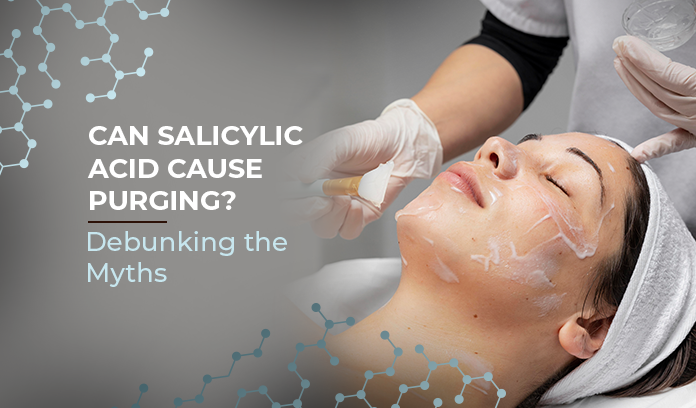For skincare ingredients formulated specially to combat acne scars or blemishes, Salicylic acid has become somewhat of a staple ingredient. However, a common concern that arises while introducing salicylic acid into an anti-acne skincare routine is the possibility of purging.
Let’s delve further into this topic and debunk some major myths to separate facts from fiction.
Understanding Purging
Purging occurs when certain skincare products or ingredients like Salicylic acid expedite the skin’s natural exfoliation process. This can cause an initial increase in breakouts as enlarged or clogged pores are brought to the surface.
However, this doesn’t equate to a negative reaction to the product. Typically, purging is temporary, lasting a few weeks and followed by visible improvements in skin texture.
Salicylic acid’s mechanism
As a beta hydroxy acid (BHA), Salicylic acid penetrates the pores by exfoliating the inside pore lining as well as the skin’s surface.
It helps dissolve debris, excess oil, and dead skin cells making it an effective treatment choice for acne-prone skin.
Although the deep-cleansing action can trigger purging, it is crucial to note that this indicates the efficacy of the product when it comes to anti-acne skincare.
The Difference between Purging and a reaction
Can salicylic acid cause purging? It’s vital to distinguish clearly between purging and an adverse skin reaction.
If your skin experiences dryness, excess redness, burning, itching, or irritation, it might be due to your skin being sensitive to salicylic acid or that the product is too concentrated for your current skin condition.
In such a case, it is always wise to seek the expert guidance of a dermatologist who can suggest products more tailored to your skin type.
Navigating the Purging phase
During the purging phase, a consistent skincare routine can make a considerable impact on your skin health. Avoid adding any new products that could cause further skin irritation.
Gentle cleansing, lightweight moisturization, and sun protection are crucial for skin support during this period of adjustment.
Conclusion
While salicylic acid can cause purging, it is also a marker of the product effectively addressing underlying skin conditions.
Understanding the difference between purging and an extreme skin reaction is vital to making informed decisions about your skincare regimen. When in doubt, personalized advice by a dermatologist can get you closer to achieving your skin goals.
Sometimes, the journey to healthier skin often involves temporary setbacks, but the results of having a smoother, clearer complexion – are very much worth it.











